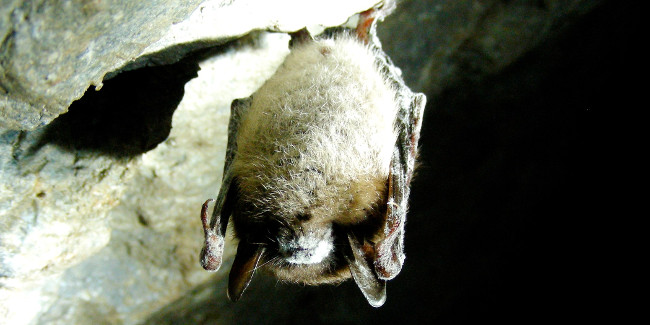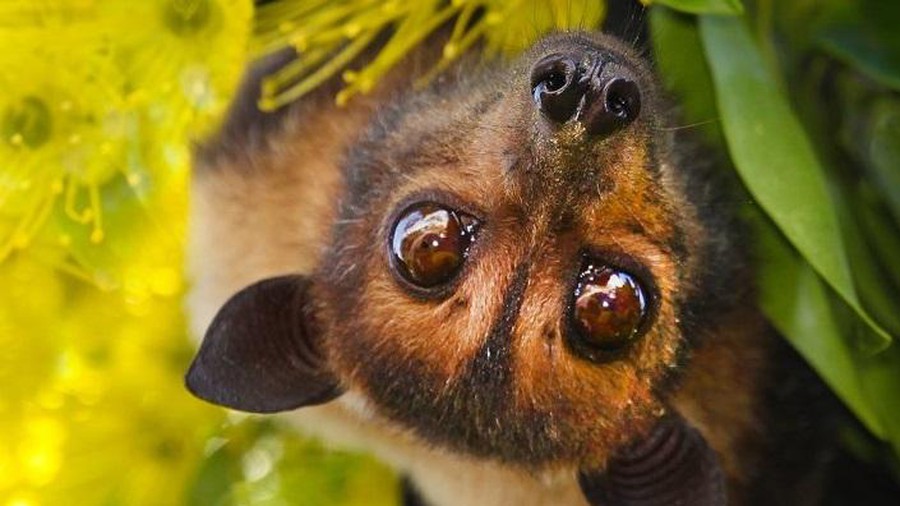UV rays can save bats from dangerous fungal diseases
If you study bats, then you're probably familiar with white nose syndrome. It is a hibernating animal disease, and it has raged bat species across North America in recent years. There may be new hope that scientists have discovered that this pathogenic fungus can die when exposed to ultraviolet rays.
This fungal pathogen is studied by researchers from the US Forest Department, the US Department of Agriculture and the University of New Hampshire, known by the name Pseudogymnoascus destructans.

When compared with six species of Pseudogymnoascus fungus, it was discovered that P. destructans lacked an important enzyme that allowed it to repair DNA damage caused by ultraviolet light. When the fungal samples were exposed to a mild dose of UV-C light from the handheld source, the survival rate reached about 15% - this rate dropped to less than 1% when the dose was exposed to moderate levels.
In both cases, the exposure time was not more than a few seconds.
Current plans require further research, in which few brown bat species will be treated with ultraviolet rays during hibernation, and then compared with untreated control groups. Scientists will also note whether there are any side effects, such as the death of beneficial bacteria, natural bacteria that live in bat skin.
Forestry scientist Jon Palmer, the study's lead author, said: "It's no wonder that P. destructans doesn't seem to be able to repair the damage caused by ultraviolet light. It was discovered that when there is no light, it still maintains the ability to repair DNA due to ultraviolet radiation. to manage the disease and save bats living with this disease ".
This research has just been published in Nature Communications.
See more:
- Can ants survive if they fall from the roof of the building?
- How real is the blood-sucking monster on the Earth scary?
- How do animals see the world far beyond humans?
You should read it
- The world of microbes shimmering and fantasy on your teeth
- After coughing and sneezing, bacteria can survive in the air for up to 45 minutes
- Get fever with new technology to identify E-coli bacteria
- What is UV rays? Which UV level is safe for humans?
- How to protect skin from UV rays while indoors?
- Scientists are about to teach mosquitoes without human blood
- Komodo dragon blood helps fight antibiotic resistant bacteria
- The towel is the ideal environment for bacteria to grow
May be interested
- Is face-locked technology on smartphones harmful to eyes?
 does it affect the eyes of infrared rays directly on the eyes of people?
does it affect the eyes of infrared rays directly on the eyes of people? - Learn about far infrared rays and its applications in medicine
 far infrared rays and devices from far infrared rays have brought many new breakthroughs in the field of medicine.
far infrared rays and devices from far infrared rays have brought many new breakthroughs in the field of medicine. - Solution for treating athlete's foot
 is it possible to cure the fungal skin disease itself? the answer is yes, however, you should be cautious in treating the disease so that the foot fungus is not spread and can be removed.
is it possible to cure the fungal skin disease itself? the answer is yes, however, you should be cautious in treating the disease so that the foot fungus is not spread and can be removed. - What is gamma-ray burst?
 the first thing you imagine in your head when listening to the gamma rays phrase - what is the gamma flash? join tipsmake.com to learn about gamma ray bursts!
the first thing you imagine in your head when listening to the gamma rays phrase - what is the gamma flash? join tipsmake.com to learn about gamma ray bursts! - Why did bats survive carrying deadly virus?
 the covid-19 pandemic made us deeply aware that bats have a strange ability to carry deadly viruses but somehow survived.
the covid-19 pandemic made us deeply aware that bats have a strange ability to carry deadly viruses but somehow survived. - New virus discovered in bats that can infect humans like Covid-19
 a group of chinese scientists has just discovered a new strain of coronavirus in bats, capable of being transmitted from animals to humans through the ace2 receptor - the same mechanism used by sars-cov-2.
a group of chinese scientists has just discovered a new strain of coronavirus in bats, capable of being transmitted from animals to humans through the ace2 receptor - the same mechanism used by sars-cov-2. - Top 11 exotic animals you may have heard for the first time
 let's tipsmake.com learn about the top 11 exotic animals you may have heard first below!
let's tipsmake.com learn about the top 11 exotic animals you may have heard first below! - Why are humans susceptible to animal diseases?
 over the past 50 years, a series of zoonotic diseases have spread rapidly to humans. specifically, the great ape was the culprit causing the hiv / aids crisis in the 1980s, the bird flu pandemic 2004-2007 originated from birds ...
over the past 50 years, a series of zoonotic diseases have spread rapidly to humans. specifically, the great ape was the culprit causing the hiv / aids crisis in the 1980s, the bird flu pandemic 2004-2007 originated from birds ... - Despite the poisons that cause pain, Pallid bats still 'eat' the most unique scorpions in America
 pallid bats with unique defense mechanisms can make the raizona scorpion, which has strong venom, become their meal.
pallid bats with unique defense mechanisms can make the raizona scorpion, which has strong venom, become their meal. - The 5 most rare diseases in the world turn ordinary people into 'superheroes'
 the patient of one of the five most rare diseases in the world will become a 'superman' possessing special abilities such as superhuman memory, fearless, painless ...
the patient of one of the five most rare diseases in the world will become a 'superman' possessing special abilities such as superhuman memory, fearless, painless ...










 Floating equipment can obtain hydrogen gas from seawater
Floating equipment can obtain hydrogen gas from seawater Clean the aquarium yourself thanks to symbiotic relationships between fish and plants in the tank
Clean the aquarium yourself thanks to symbiotic relationships between fish and plants in the tank Microwaves produce a lot of CO2 equivalent to nearly 7 million cars
Microwaves produce a lot of CO2 equivalent to nearly 7 million cars China has just built the world's largest air purifier to solve the problem of dust
China has just built the world's largest air purifier to solve the problem of dust Paper equipment can identify contaminated water
Paper equipment can identify contaminated water The 25-year study shows that rising sea levels are rising
The 25-year study shows that rising sea levels are rising